For prospective paddlers, deciding on a first kayak can be an exciting, yet daunting experience. It's common to confront a hefty price tag and wonder if this is the right hobby for you. Plus, many models are tailored for specific conditions or experience levels, which only serves to muddy the waters. The nice thing about entry-level, inflatable kayaks is they allow you to get a feel for the sport, without breaking the bank or taking up your whole garage.
Once you've splashed around enough and (inevitably) solidified your passion for paddling, then appropriate upgrades will start to seem more approachable/justifiable. Let's compare the Intex Challenger K1 ($170 USD, including a paddle) and the Advanced Elements Advanced Frame ($500 USD, no paddle) inflatable kayaks and see if you can get by with the least expensive starter model, or if might want to spend a bit more to ensure a life-long love for kayaks. I'll give you the rundown on both these models, and try to answer some of the basic questions about inflatable kayaks while I'm at it.
First up,
Intex Challenger K1 kayak review
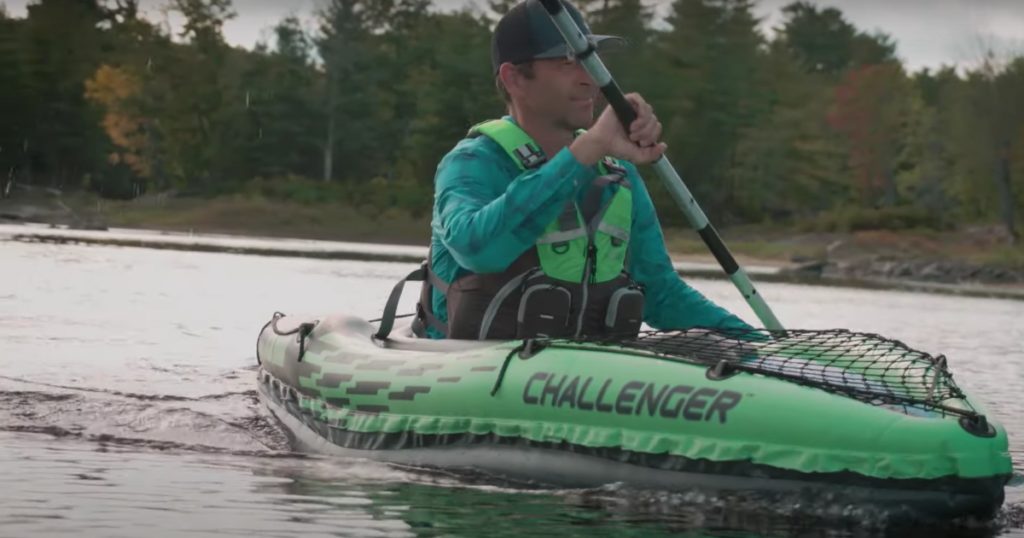
Are Intex inflatable kayaks safe?
The first thing that comes to mind when talking about entry-level inflatable kayaks is durability. Saving a few hundred bucks won't count for much if the thing rips apart in the first week and ends up in a landfill the next. The Intex Challenger K1 kayak is made with waterproof vinyl, which does tend to be fairly durable. If you avoid dragging it to and from the water, and successfully avoid hitting any rocks while out paddling, then I think this guy could last you for a solid stretch.
That being said, another limitation to be aware of is that the Intex Challenger only has two inflatable compartments. This is part of what cuts down on the cost, but if one of those does pop while out on the water, you've just lost 50% of your kayak, which will likely mean swimming ashore and walking back to your starting point.
Is it OK to leave an inflatable kayak inflated?
Another way to prolong the durability of any inflatable kayak is to be cognizant of the conditions in which you store it. For starters, it is best to deflate, or at least partially deflate (~60 – 70% of max pressure) when leaving it for an extended period. Before packing it away completely, make sure that it is dry, so as to prevent mold from forming. And finally, try not to leave it baking in the sun for too long. If you're taking a lunch break then do your best to lay it under a shaded tree. Long term sun exposure can wreak havoc on a lot of technical, sporting goods gear.
Are inflatable kayaks as good as regular kayaks?
Generally speaking, inflatable kayaks aren't as fast or as comfortable as hard-shell kayaks of the same class. Where they do shine is in portability and stowability (since they're lighter and pack down at the end of the day). One way that inflatable kayaks can make up ground in terms of performance is by having a high capacity for inflation. In the case of the Intex Challenger K1, it can only inflate to 1 – 2 psi, a marked difference from the 10 – 15 psi capacity of some higher end inflatable models. This will make for a consistently soft and slow kayak, which is still fine as long as you're just looking to bum around on the water from time to time.
Next up,
Advanced Elements Advanced Frame kayak review
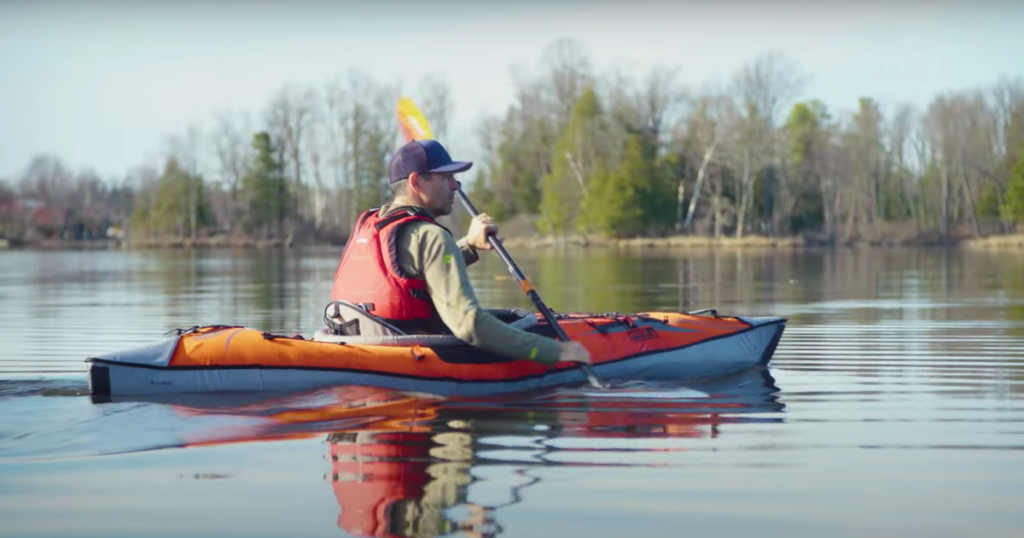
Is the Advanced Elements Advanced Frame any good?
There are some nice upgrades in the Advanced Frame that set it apart from the Intex Challenger K1, and other basic inflatable kayaks, that really justify the additional cost. For instance, the Advanced Frame actually has a bit of a solid frame on the bow, which like a hard-shell kayak, cuts through the water and improves performance. The Advanced Frame also allows for the optional upgrade to a drop-stitch construction floor. This extra investment will dramatically increase the rigidity, and therefore the performance of this kayak.
Do inflatable kayaks puncture easily?
Another example of the Advanced Elements Advanced Frame inflatable kayak's strength, compared to the cheaper alternatives, is the durable, abrasion-resistant skin that wraps the inner vinyl bladders. This helps protect the kayak from puncturing, even when some rougher eventualities occur on the water. It's still best to avoid dragging it around unnecessarily, but things happen. The Advanced Frame outer layer will work to prevent punctures, and thereby prolong the lifespan of your beginner boat.
It's also important to note that the Advanced Frame has seven inflatable compartments. Four of them are minor additions, but this is still a significant improvement on the two compartments of the Intex Challenger K1. Should something poke through the protective skin, you'll likely still be able to limp your way back to shore using the remaining air bladders.
Are inflatable kayaks any good on rivers?
Both the Intex Challenger K1 and the Advanced Elements Advanced Frame are designed for recreational, flat water paddling. This may include a deep, gentle river, but beware of any rougher conditions. You won't want the more delicate inflatable kayaks to drag in shallow areas or bounce off unexpected rocks in choppier waters. Entry-level inflatable models are great for getting into kayaking, but you'll always want to be aware of threats to durability. Don't let a freak encounter ruin your summer fun. Whenever possible, aim for easy-going, sheltered bodies of water.
Best beginner inflatable kayak?
For someone who wants to just break the ice and get a feel for paddling, the $170 (USD) pricepoint of the Intex Challenger K1 can't be beat. However, if you envision yourself catching the kayaking bug, then it's likely that you'll quickly outgrow this basic inflatable boat (or it will deflate on you and become something for the next dump run). If, on the other hand, you can manage the higher (but still overall modest) price tag of the Advanced Elements Advanced Frame for your first vessel, then I think you'll find that it is sturdier, more fun to paddle, and something that will give you loads of quality sessions before having to take the next step into a fancier model.
I hope you enjoyed this article. For more information, check out my gear reviews, tips, and adventures on PaddleTV.
Disclaimer: This article contains affiliate links in which Ken Whiting earns a small commission at no additional cost to you, but it is a great way to show your support. Thanks!
Other paddling gear I use and recommend
NOTE: These are affiliate links where I’ll earn a small commission if you make a purchase at no additional cost to you, but it’s a great way to show your support. Thanks!
KAYAKS I RECOMMEND
Advanced Elements Advanced Frame
FOOTWEAR
PADDLING SHIRTS / TOPS
NRS H2Core Silkweight Long Sleeve Shirt
NRS Hydroskin Short Sleeve Shirt



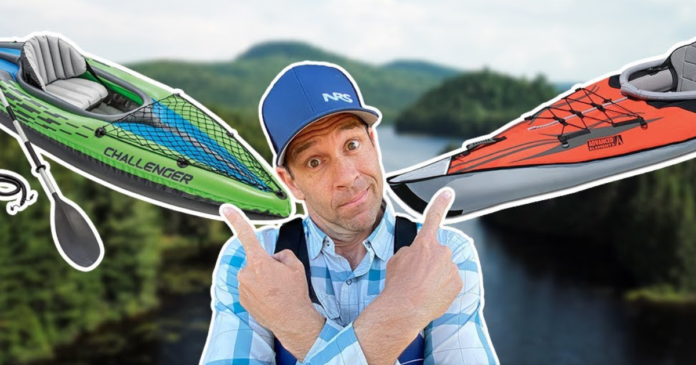
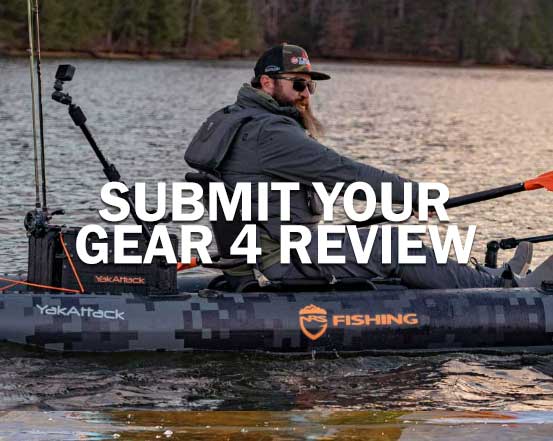







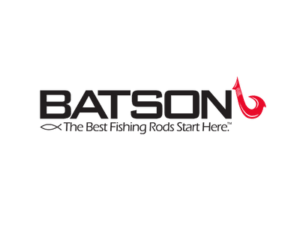



It’s really helpful for beginners like me who are considering getting into kayaking. Understanding the differences between entry-level options like the Intex Challenger K1 and the more advanced Advanced Elements Advanced Frame is key to making the right choice for long-term enjoyment on the water.